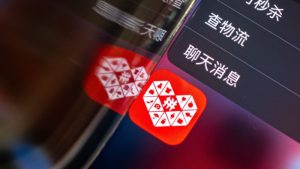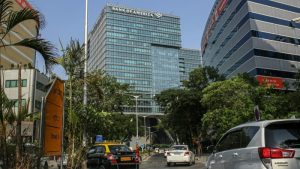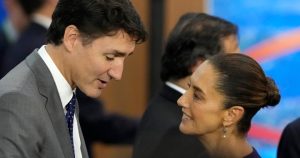Nikon seeks to diversify beyond cameras and chips amid geopolitical tensions
Unlock the Editor’s Digest for free
Roula Khalaf, Editor of the FT, selects her favourite stories in this weekly newsletter.
Japan’s Nikon has said a global reordering of the chip supply chain is buoying exports of its semiconductor equipment as it tries to pivot away from reliance on sales to China and the US.
The company, better known to consumers for its cameras and lenses, vies with ASML and Canon to sell lithography equipment. It has so far profited from selling less advanced machinery to China while its rivals’ more cutting-edge equipment has faced US-led export restrictions.
Nikon president Muneaki Tokunari told the Financial Times he expected the company to weather any downturn in its China business from an extension of restrictions, with geopolitical tensions pushing many countries to build their own chip supply chains and rely less on supplies from Taiwan, home to the main contract chipmaker TSMC.
“New customers are increasing in places that didn’t exist before, such as developed markets, India, the Middle East and countries around the world that are feeling the risk of concentrating everything in Taiwan or trying to attract semiconductors to their own countries,” he said.
China still accounts for 17 per cent of Nikon’s overall revenues, giving the group the confidence to launch a new version for the first time in 25 years of its well-established I-Line lithography machine, which makes chips that regulate power for electric vehicles.
The company has also released new offerings for Arf immersion scanners that use argon fluoride lasers to produce chips and have also not been restricted by export bans.
But while Nikon has been a beneficiary of the controls to date, according to some analysts, as Chinese groups snap up its lower-tech machines, there remains a risk that Washington could toughen restrictions further after November’s presidential election.
“The rules [on export controls] could get changed tomorrow,” said Tokunari.

The company’s share price is up almost 30 per cent this year, trading at over ¥1,800 ($12), a far cry from the ¥620 point it touched in 2020, the year Tokunari joined as chief financial officer.
It received a bump this month after it became public that EssilorLuxottica, the French-Italian eyeglass and lens giant, had taken a 5 per cent stake in the company. The two groups have had a long relationship and established a joint venture in 2000. UK-based Silchester International also holds more than 8 per cent and investment manager M&G has slightly more than 5 per cent.
Nikon was a major semiconductor group throughout the 1980s and into the 2000s before losing significant market share to ASML. Founded in 1917 through the merger of three optics companies, it has increasingly shifted its focus from cameras and chipmaking to other components, supplying the mirrors and lenses used in a vast array of industrial, medical and scientific applications.
“New management has significantly improved the business in recent years . . . previously under-monetised [semiconductor] knowhow has been converted into meaningful sales and profits in their semi components business,” said Carl Vine, portfolio manager at M&G.
Tokunari said he had successfully diversified Nikon’s revenue base from historic reliance on supplying chipmaking tools to US giant Intel and Chinese clients. Between 2019 and 2021, on average, 80 per cent of Nikon’s Arf scanners were sold to Intel. However, that has dropped to less than 50 per cent this year, he said, as the company expanded its customer base.
Meanwhile, the digital camera market has continued to shrink following the pandemic, but Nikon’s decision to shift to higher-end models has paid dividends, with Jefferies expecting “earnings improvement over the next one to two years”.
More broadly, Nikon is also exploring new businesses, including 3D printing, which has vast aerospace and defence potential, according to analysts.
In 2022, it agreed to buy German 3D printer maker SLM Solutions Group and recently appointed former chairman of the US joint chiefs of staff, Mike Mullen, as a strategic adviser.
“Nikon is working to rechannel their high-precision manufacturing prowess into new areas, including 3D printing for aerospace and defence. This would allow them to reduce dependence on sales of chipmaking tools to China,” said Macquarie analyst Damian Thong.
The reality, however, remains that “Nikon’s Arf lithography business is highly dependent on customers in China, and may become more so given Intel’s troubles”, he added.
#Nikon #seeks #diversify #cameras #chips #geopolitical #tensions







